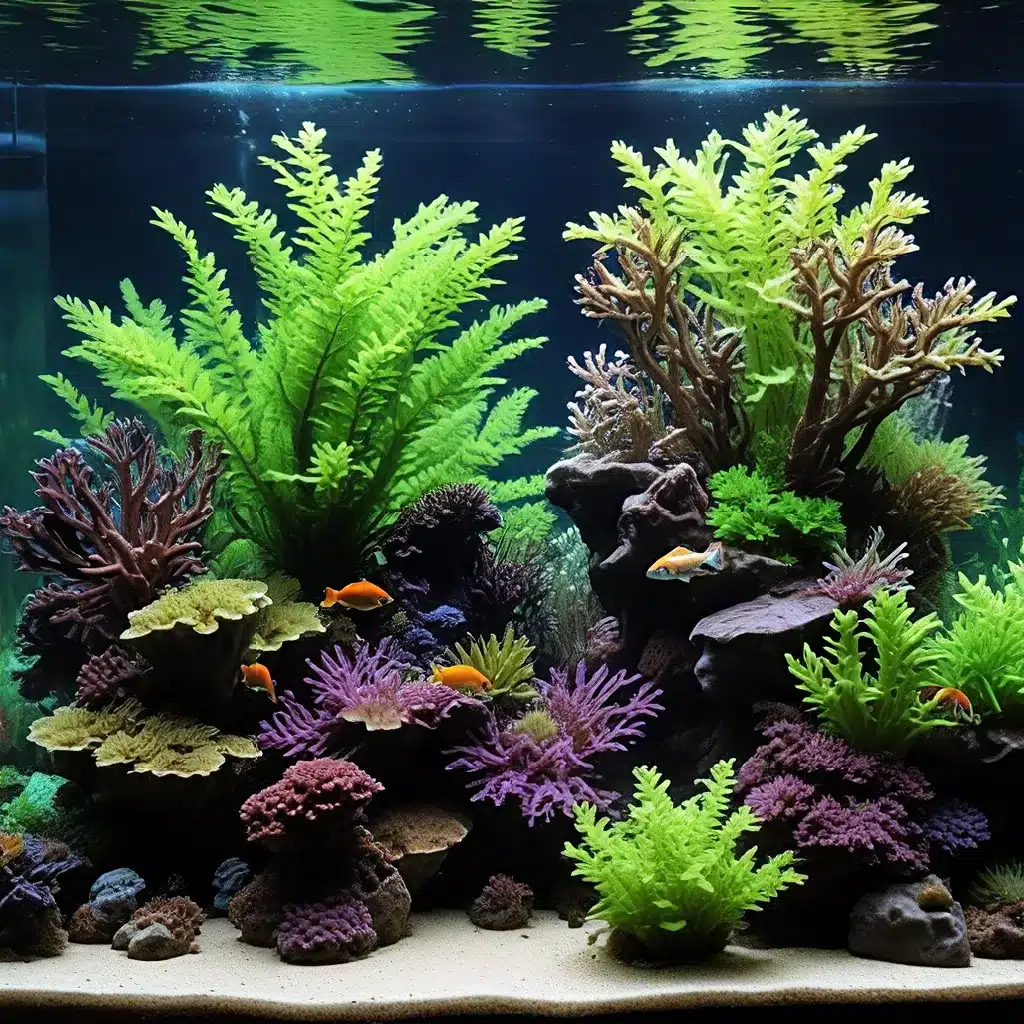
Establishing a Solid Foundation
Embarking on the journey of setting up a marine aquarium can be an exhilarating yet daunting experience for aspiring hobbyists. Whether you’re drawn to the captivating beauty of vibrant coral formations or the mesmerizing movements of tropical fish, creating and maintaining a thriving underwater oasis requires a strategic approach. In this comprehensive guide, we’ll delve into the essential tips and techniques that will help you lay the groundwork for a successful and sustainable marine aquarium.
Proper equipment setup and water management are the cornerstones of a healthy marine ecosystem. It’s crucial to invest in a reliable filtration system, appropriate lighting, and carefully monitor key water parameters such as alkalinity, calcium, pH, and salinity. Stability is key, as drastic fluctuations in these parameters can stress your marine inhabitants and make them more susceptible to disease or rapid tissue necrosis (RTN).
One of the common challenges faced by novice reef keepers is the occurrence of Rapid Tissue Necrosis (RTN), a phenomenon where SPS (small-polyp stony) corals suddenly lose their tissue, turning the once-vibrant organisms into stark white skeletons. While there are several potential causes, including poor water quality, stray voltage, and pest infestations, sometimes the underlying reason remains a mystery. Implementing preventative measures, such as regular water testing, quarantining new acquisitions, and being vigilant about equipment maintenance, can help mitigate the risk of this dreaded issue.
Choosing the Right Inhabitants
Selecting the appropriate marine species for your aquarium is crucial for creating a harmonious and sustainable ecosystem. Carefully researching the specific care requirements, behavioral patterns, and compatibility of different fish, invertebrates, and corals is essential. Introducing species in a gradual and thoughtful manner, while allowing time for the aquarium to establish and stabilize, can help prevent overcrowding and minimize the risk of aggressive interactions or disease outbreaks.
When it comes to corals, SPS varieties, such as Acropora and Pocillopora, are often sought-after for their captivating shapes and vibrant colors. However, these delicate species require meticulous water quality management and careful placement within the aquarium to thrive. Conversely, hardy LPS (large-polyp stony) corals, like Fungia and Blastomussa, can be excellent choices for beginner hobbyists, as they are generally more forgiving of fluctuations in water parameters.
To ensure the long-term success of your marine aquarium, it’s essential to research and understand the specific care requirements of each species you plan to introduce. This knowledge will not only help you create a visually stunning display but also maintain the overall health and balance of your underwater ecosystem.
Mastering Aquascaping Techniques
The art of aquascaping, the strategic arrangement of rocks, corals, and décor, plays a crucial role in the aesthetics and functionality of a marine aquarium. Thoughtful aquascaping can enhance water flow, provide hiding spots for fish, and create captivating visual compositions.
When designing your aquascape, consider the desired layout, incorporating both horizontal and vertical elements to create depth and visual interest. Placement of live rock is particularly important, as it not only serves as a foundation for coral growth but also helps to establish beneficial bacterial colonies that are essential for maintaining water quality.
Incorporating hardy, fast-growing macroalgae, such as Caulerpa or Chaetomorpha, can also be a valuable addition to your aquascape. These algae not only contribute to the natural beauty of your aquarium but also help to absorb excess nutrients, keeping your water parameters in check.
As you progress in your aquascaping journey, you may explore more advanced techniques, such as utilizing specialized rock formations or incorporating unique materials like driftwood or manmade structures. However, it’s important to remember that the success of your aquascape ultimately lies in its ability to provide a thriving, self-sustaining environment for your marine inhabitants.
Ongoing Maintenance and Troubleshooting
Maintaining a healthy and vibrant marine aquarium requires a consistent and proactive approach to water management, testing, and equipment maintenance. Regular water changes, supplementation of essential elements, and diligent monitoring of water parameters are essential to ensuring the long-term success of your aquarium.
As you navigate the challenges of reef keeping, it’s important to approach each issue with a problem-solving mindset. When faced with unexpected events, such as the dreaded Rapid Tissue Necrosis (RTN), resist the urge to panic and instead methodically investigate the potential causes. This may involve examining water quality, inspecting equipment for potential issues, and quarantining any new additions to your aquarium.
Remember, even the most experienced reef keepers occasionally encounter mysterious or unexplainable events. The key is to remain vigilant, maintain meticulous records, and be willing to learn from both successes and failures. By embracing a continuous learning mindset, you’ll be better equipped to tackle any challenges that may arise and ensure the longevity and vibrance of your marine aquarium.
Conclusion
Cultivating a thriving marine aquarium is a rewarding and captivating pursuit that requires a blend of knowledge, patience, and dedication. By establishing a solid foundation, carefully selecting compatible inhabitants, mastering the art of aquascaping, and diligently maintaining your aquarium, you can create a stunning underwater oasis that will inspire and delight both you and your guests.
Remember, the journey of reef keeping is an ongoing learning process, and the more you immerse yourself in the hobby, the more you’ll discover the endless possibilities and nuances of this fascinating underwater world. So, embark on your marine aquarium adventure with enthusiasm, embrace the challenges, and unlock the beauty and wonder that lies beneath the surface.
For more information and expert guidance on setting up and maintaining a successful marine aquarium, be sure to explore the wealth of resources available on King Aquarium. Happy reef keeping!

